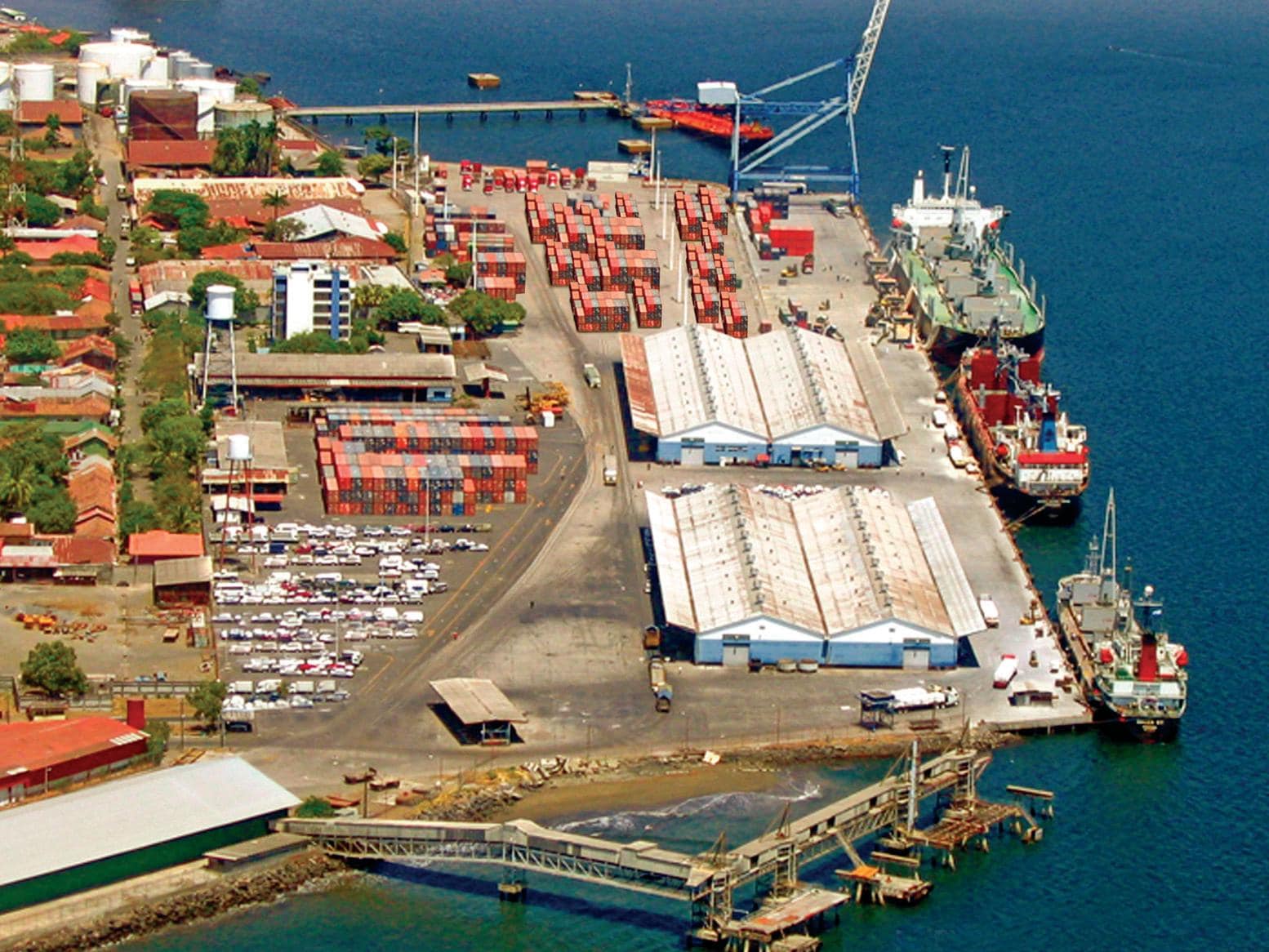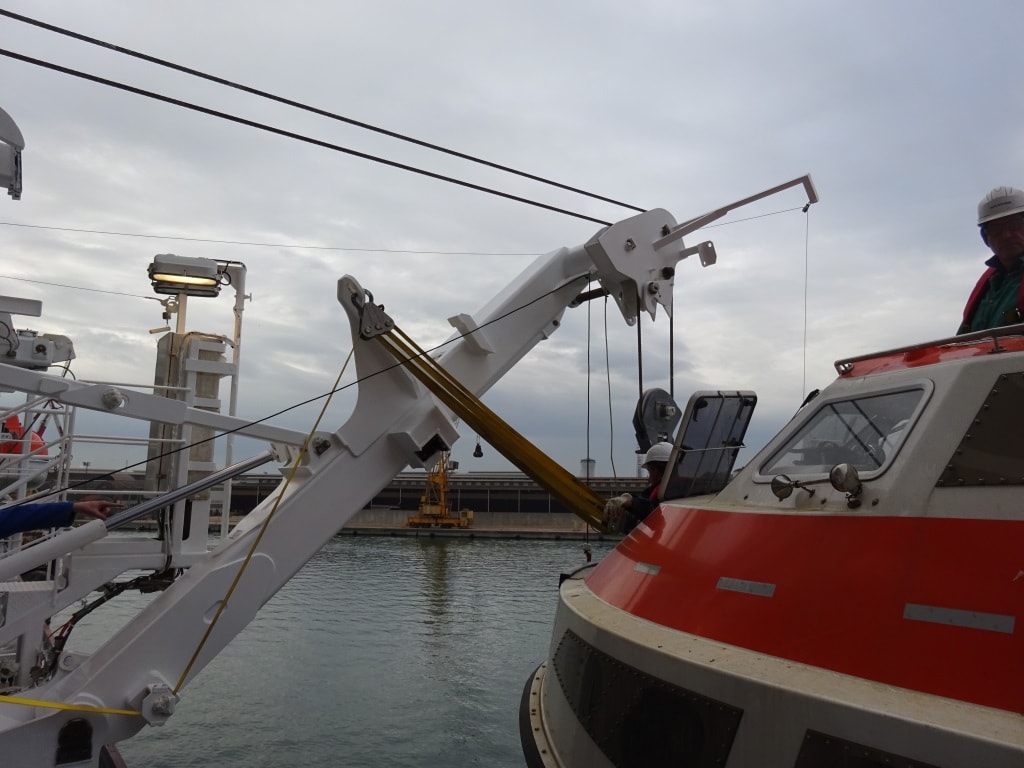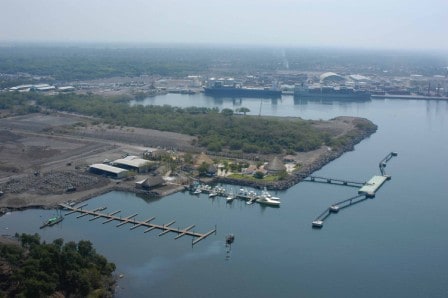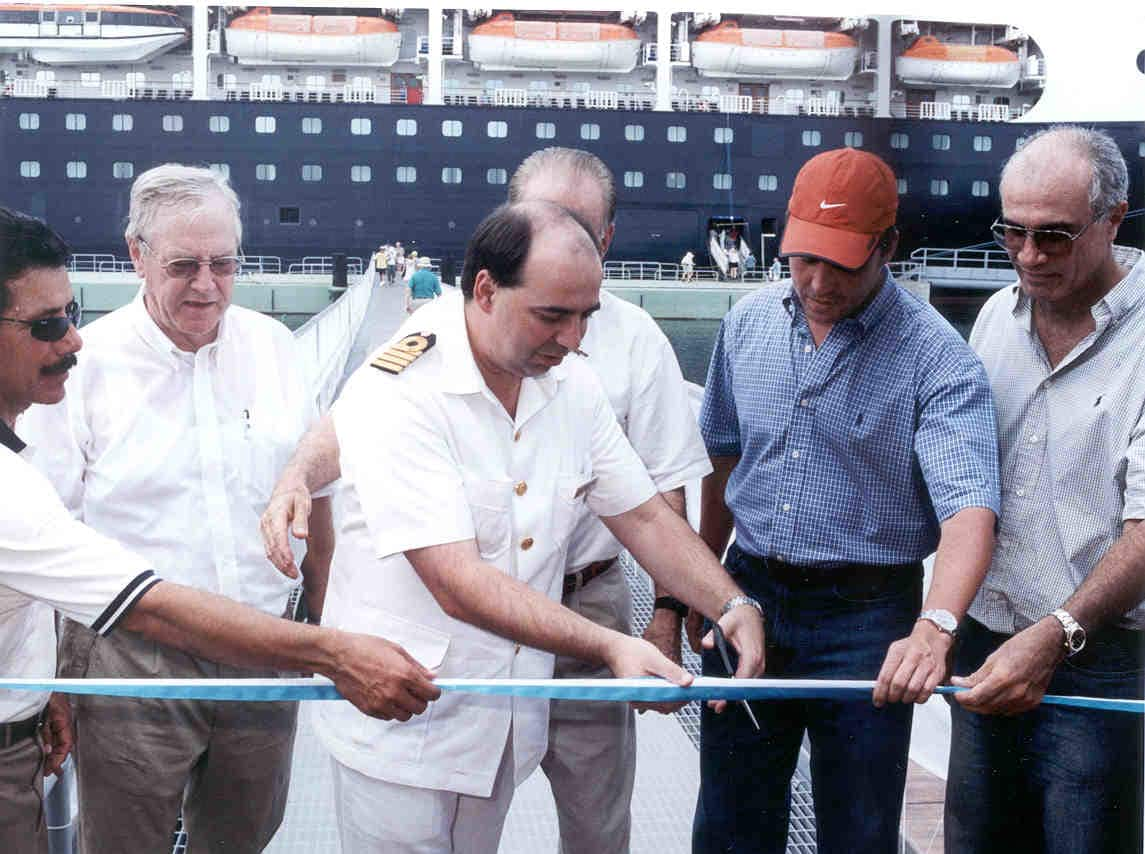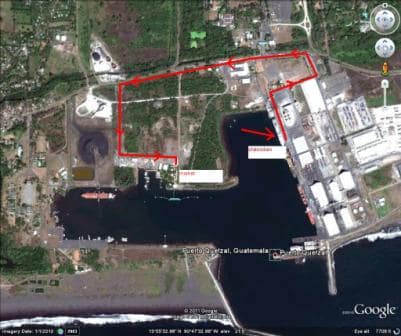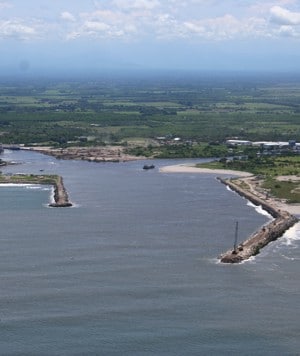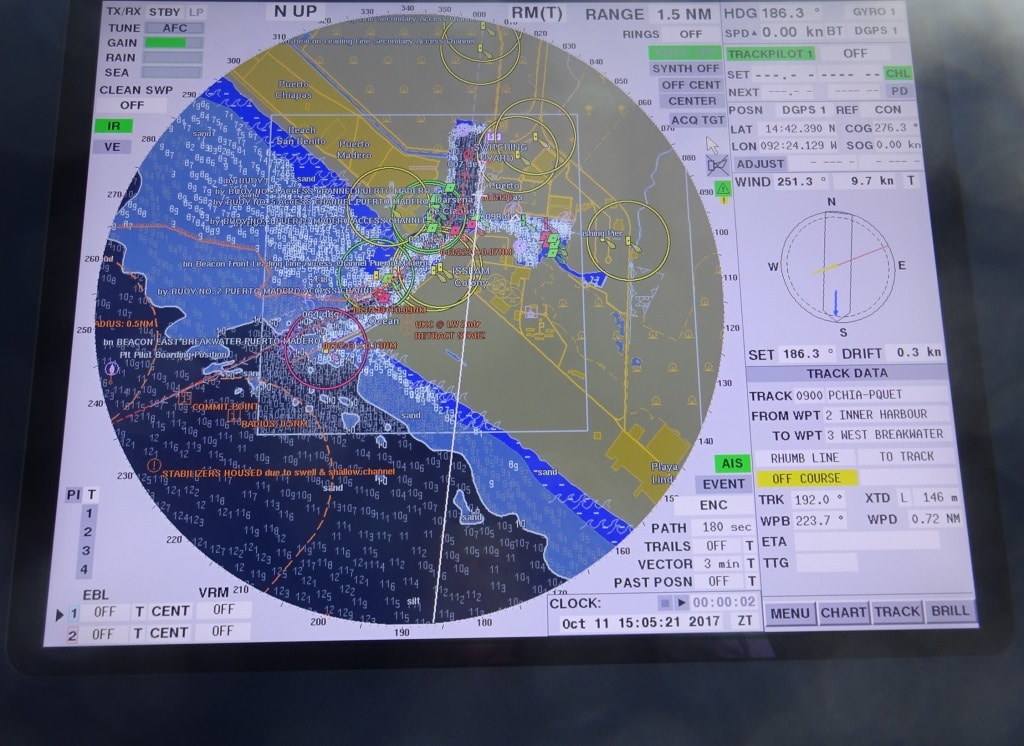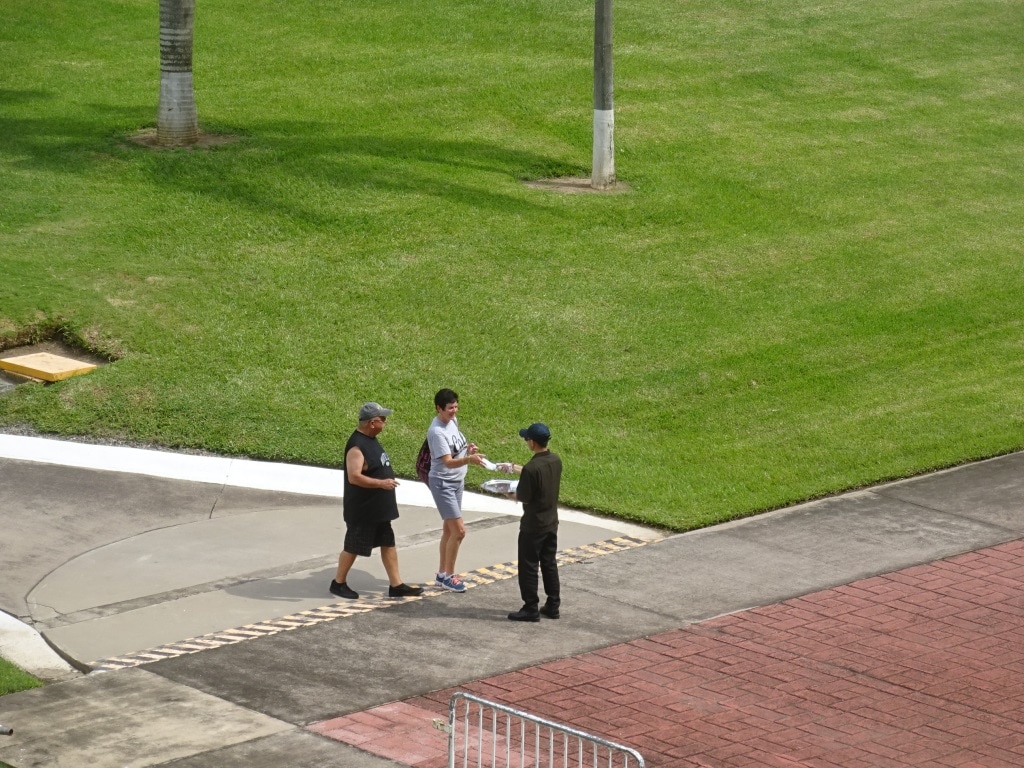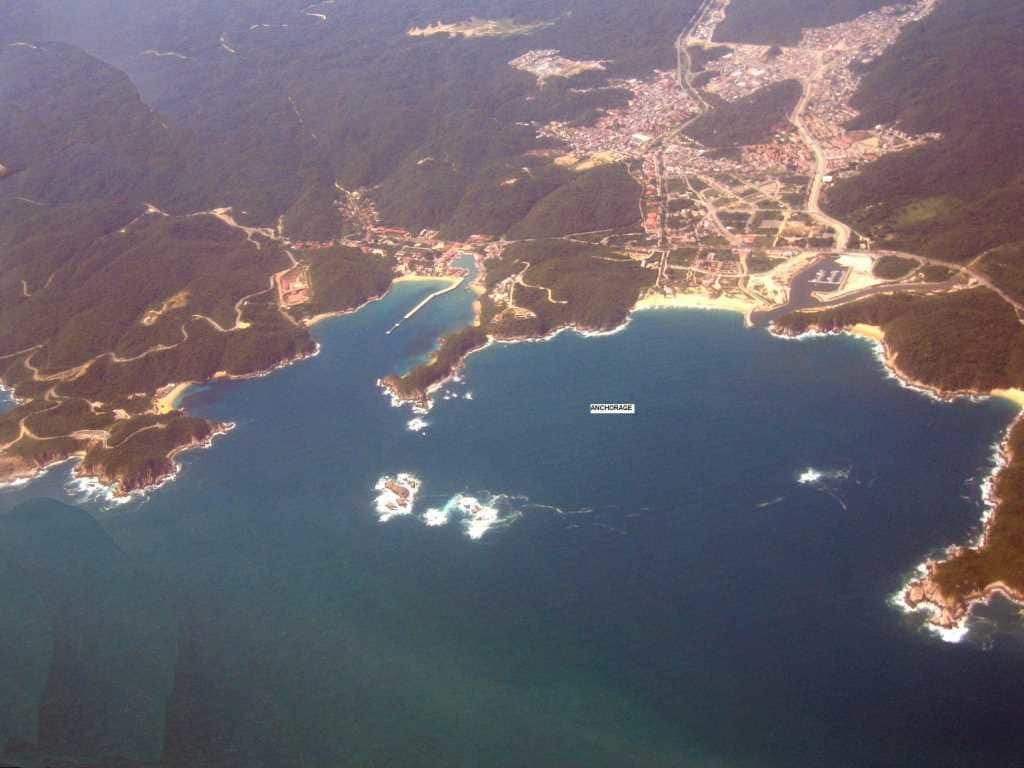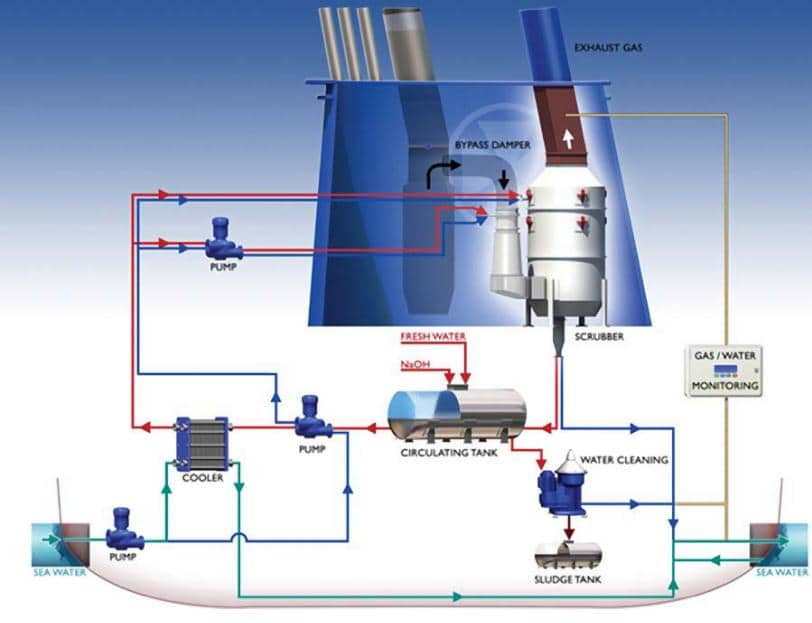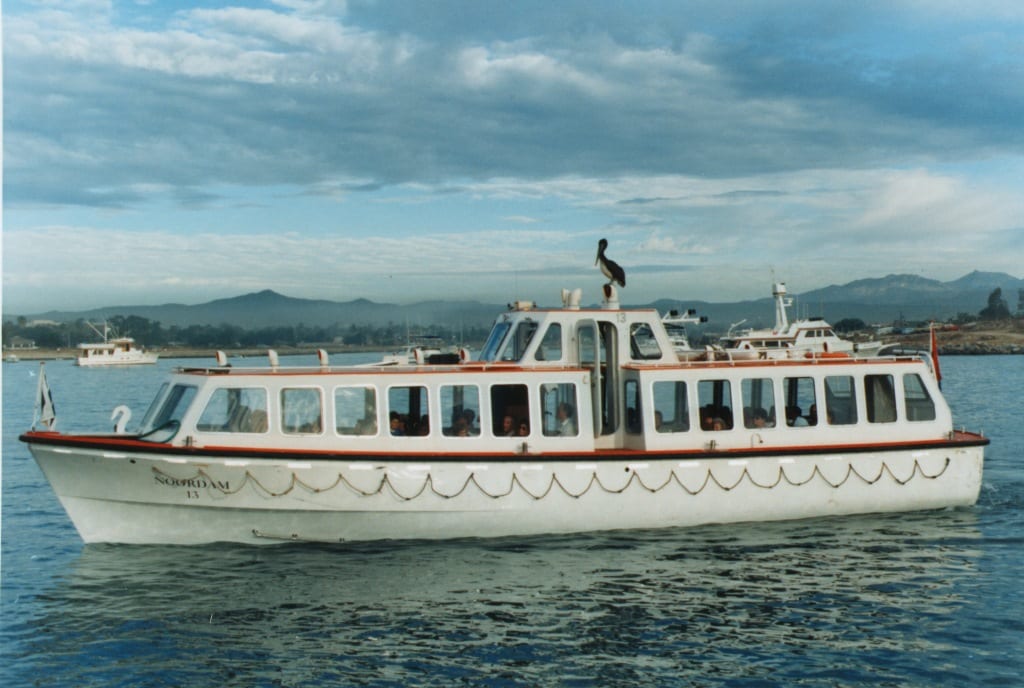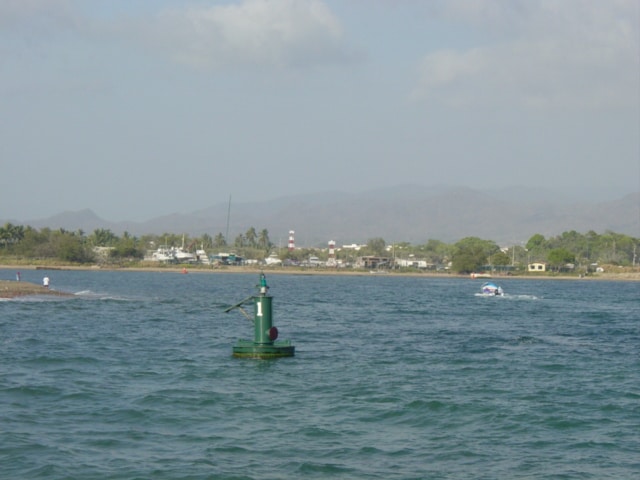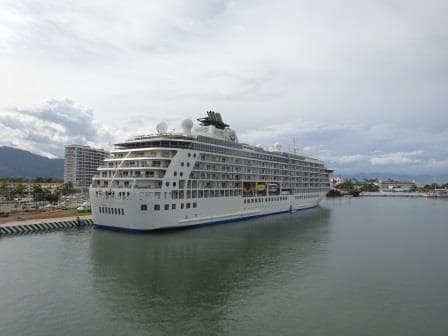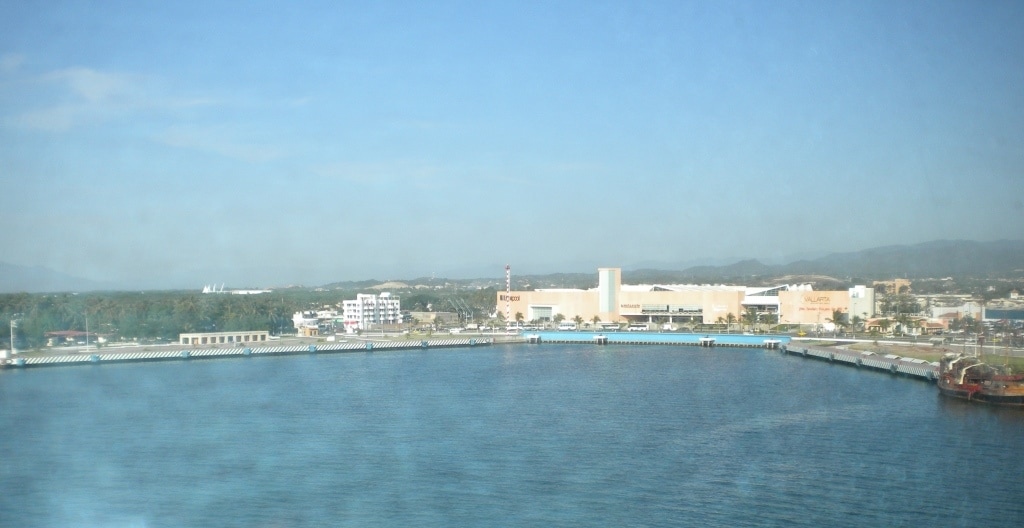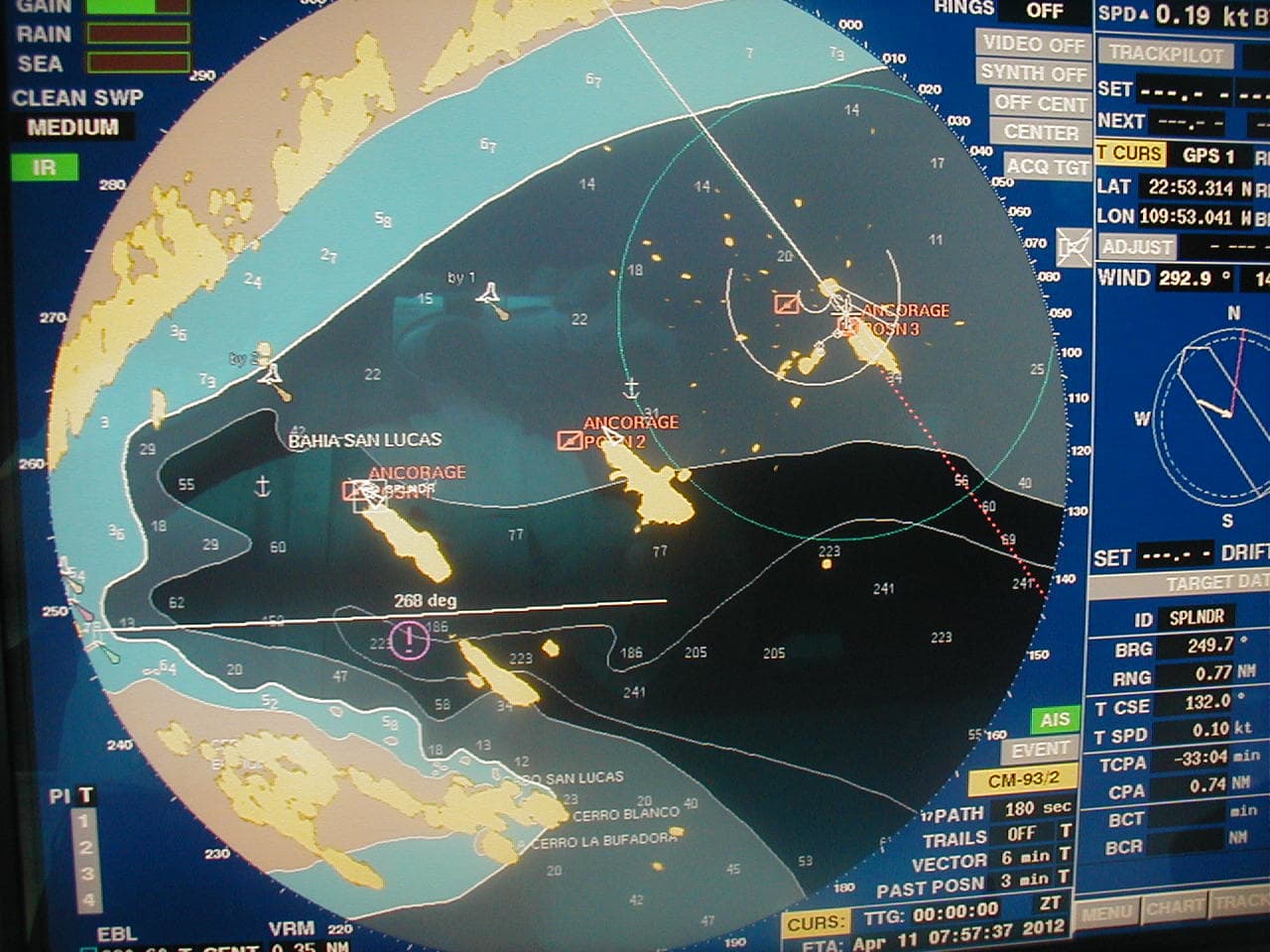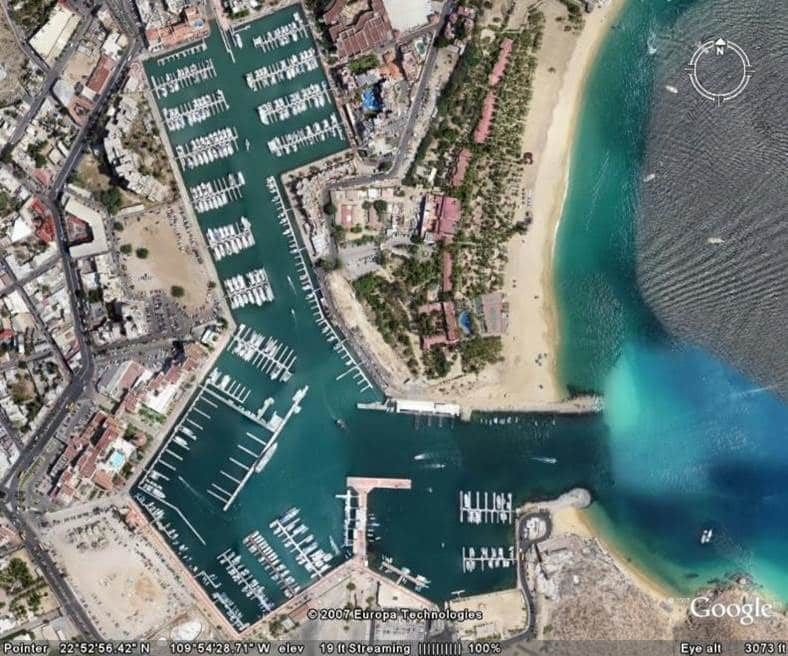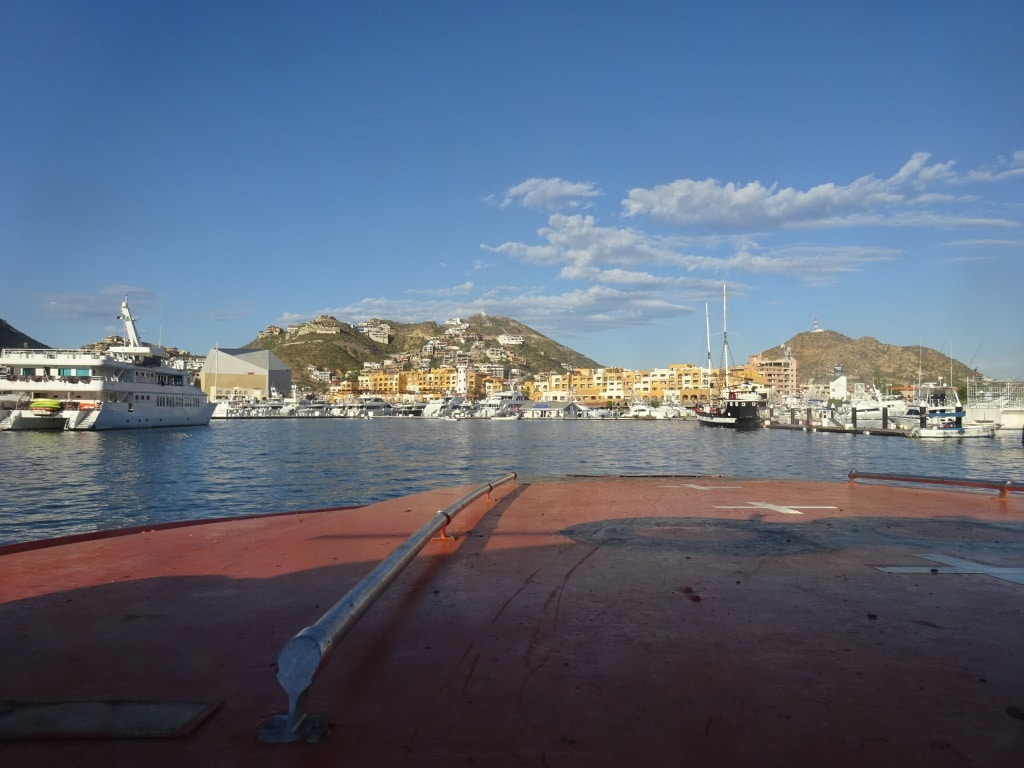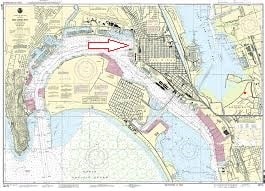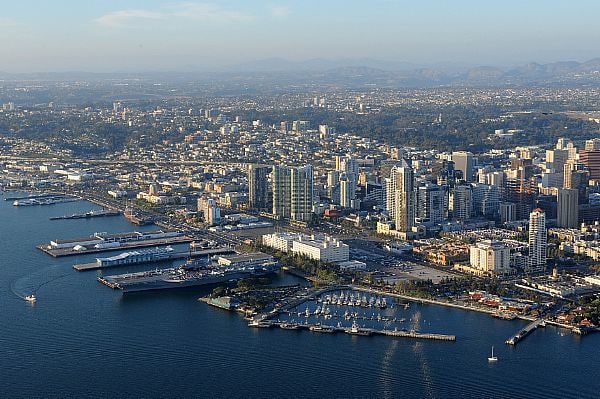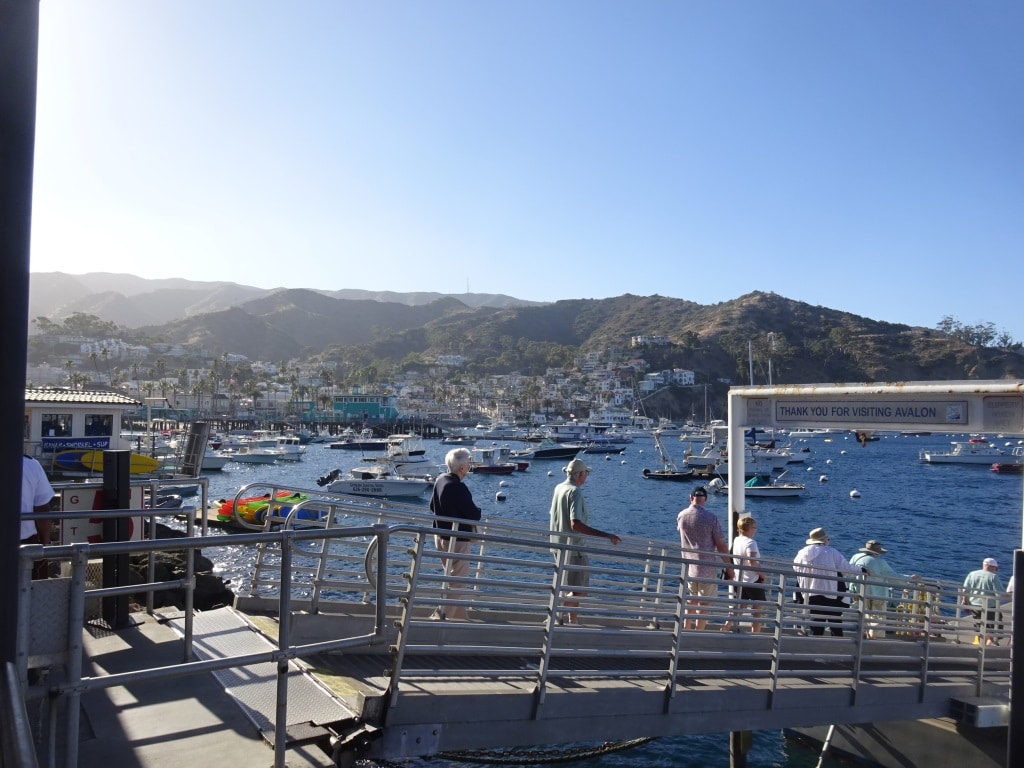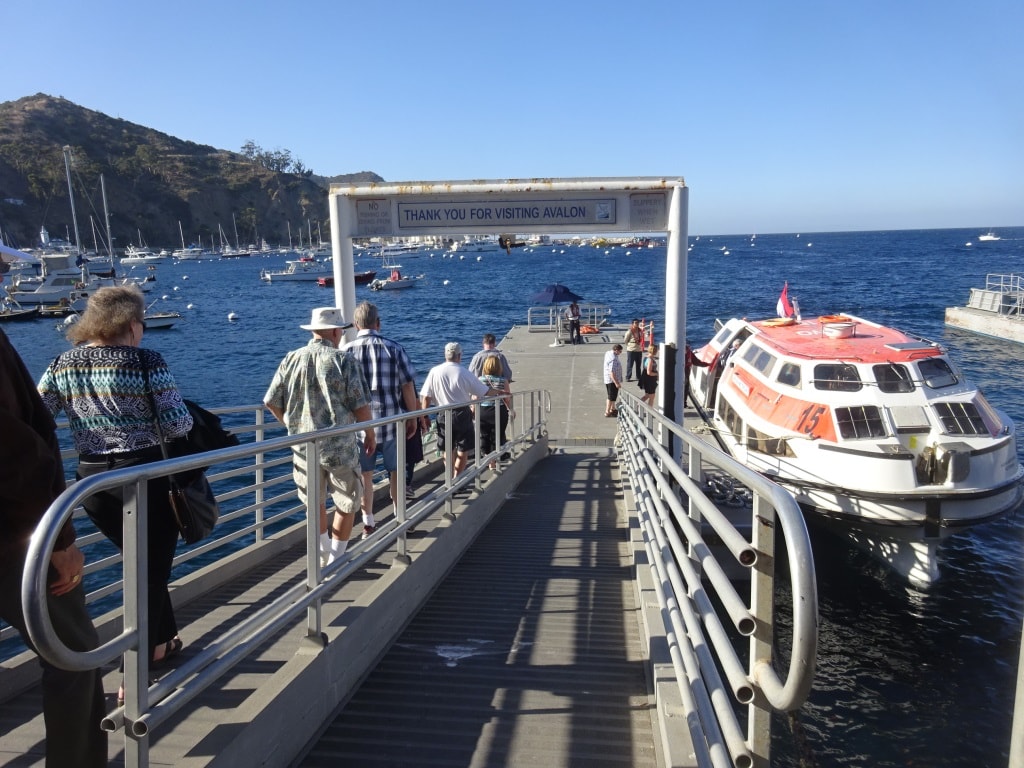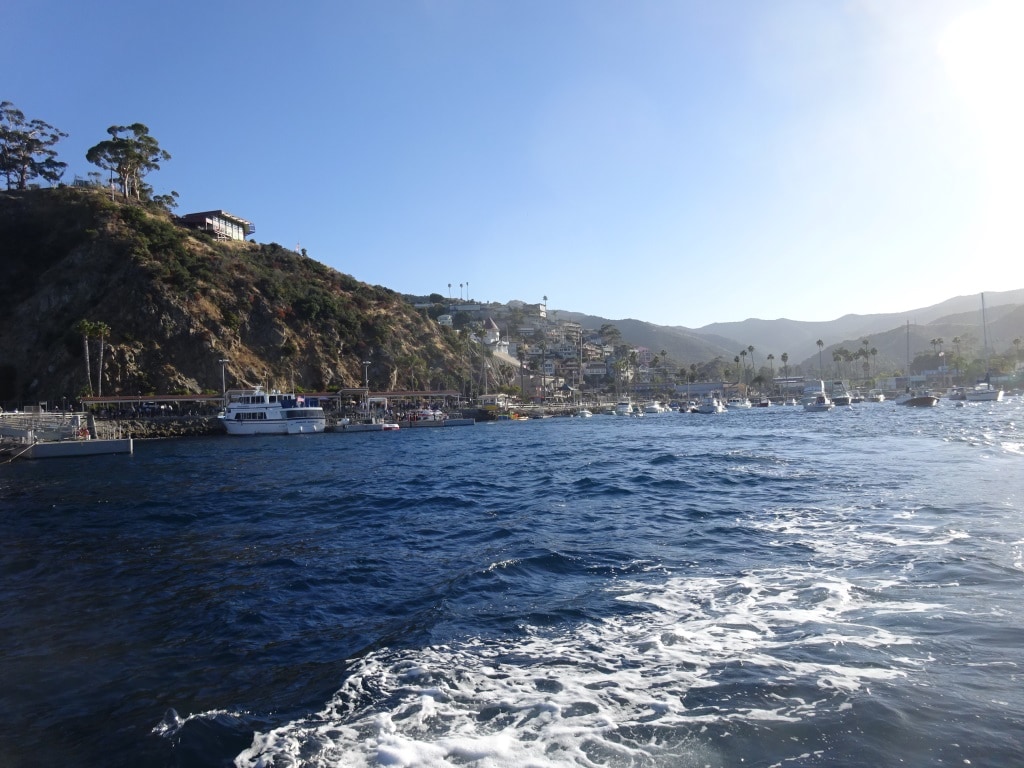When you come to this area of Costa Rica, Puerto Caldera is the main cargo port here. A long time ago, in the late 1980’s Holland America started to call at Caldera and docked at a new cargo pier which was nicely protected by a breakwater meant to keep the sometimes very unpleasant swell out. Then cruise ship tourism expanded greatly and it caused in spring and autumn such a congestion with cruise ships that there was hardly any chance for a cargo ship to dock; as every day there was a cruise ship coming in. So the local authorities decided to build a cruise terminal, a pier which runs straight into the main street of Punta Arenas. Puerto Caldera is just a cargo port and there is not much of anything else there. Now the guests could walk straight into the local town.
This was a great idea but they forgot or ignored the concerns of the professionals at sea and did not built a breakwater to protect this dock from the swell that comes in at times. and took for granted the current which comes in at an angle of 90o onto the pier and can run up to four knots. Thus the ships now have to arrive near slack tide when the current drops under two knots otherwise the ship either gets slammed against the dock or cannot get alongside. All depending whether it is flooding or ebbing and at which side of the pier you are at. Then they made the pier so small that there is hardly any room for the buses to come in and go out. They have to back in or back out of over distance of half a mile and when loading needs to take place, it is getting very cluttered. As the dock is located at the end of the Golfo di Nacoya, it forms an estuary tidal situation where the sea water is pushed up to considerable height and that means that there are long gangways/ramps and platforms and all sorts of other clutter on the dock.
So it is always with a certain trepidation that a cruise ship captain calls here. Yes we want to go as the guests really like the tours but operationally it gives quite a headache. Today was no different. The tide today was slightly different than the predictions and we had to postpone docking by half an hour and when we finally could it took all the ships power and the aid of a tugboat to dock against the still remaining current. We were joined by the Norwegian Pearl which was docking after us and also struggling with the remainder of the current, and she had to put all the brakes on to make a soft landing against the dock. By the time both ships where safely docked and the gangways were out and platforms in place, we were an hour late and nothing we could do about it. Thus from both ships all the tours left an hour late, making the tour dispatch a bit challenging as well. 10 am. means that all guests had had their breakfast and now wanted to go ashore all at the same time. So for about an hour 2000 people streamed from each ship and thus a total of 4000+ guests marched into town or invaded the country side by tour bus.
On the bridge they had their own challenges, as the swell was running in which caused the ship to slowly move up and down and with the waves once in a while creating a shudder in the ship when one slammed under the stern. When a ship is moving along the dock a little bit it means that the deck department has to continuously adjust the mooring ropes so that all 12 of them take the same tension when the ship moves. For us, when it was ebbing it was easy, yes the ship moved but the ebb pushed the ship back against the dock. When the flood came through, it started to push the ship away from the dock so the captain put on the thrusters and the Azipods and kept the ship alongside that way. A very safe operation but it meant the bridge was on battle stations all day.
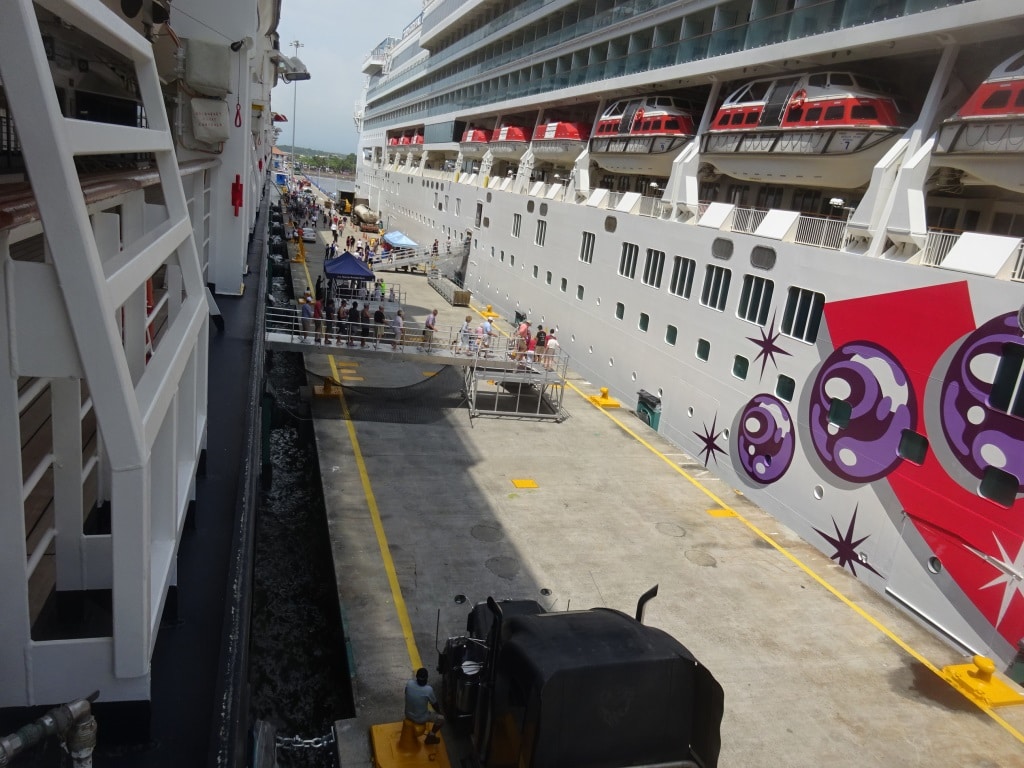
As the dock is very tidal, the port provides long ramps and platforms. Ramps ensure that rollators, scooters and those who have difficulty going up and downs steps can still get ashore. To the right the Norwegian Pearl who docked the other way around.
Ashore they had their own fun and games with the return of the tours. Unbeknown to all involved there had been mudslides on the new highway to San Jose, the capital of Costa Rica way up in the mountains. Thus all traffic had been diverted back to the old road and things were slowed down to single lane traffic. Then there was a fatal accident somewhere down that road and as a result all traffic came to a grinding halt. As a result the last tour group stepped back on board by 10 pm. As ships crew you feel really helpless then, as against nature there is nothing you can do while you still feel responsible as it is your company’s tour.
We had one final piece of luck, because it was 10 pm. we just fitted in the tidal window of being able to sail and were not more delayed because of the tide being too strong. We have some leeway in the schedule so by going up to wrap speed we can still make the Panama Canal pilot station by 05.00 hrs. the day after tomorrow. But now we have of course a very unhappy chief engineer as his fuel budget is going to take a hit. Tonight we are going an hour forward to get in sync with Panama time and tomorrow we should have an overcast day with some rain clouds. For the guests there should be things to see, as wildlife will now be playing around the ship.
But we are ending the day with a smile………………. from the kitchen department.


